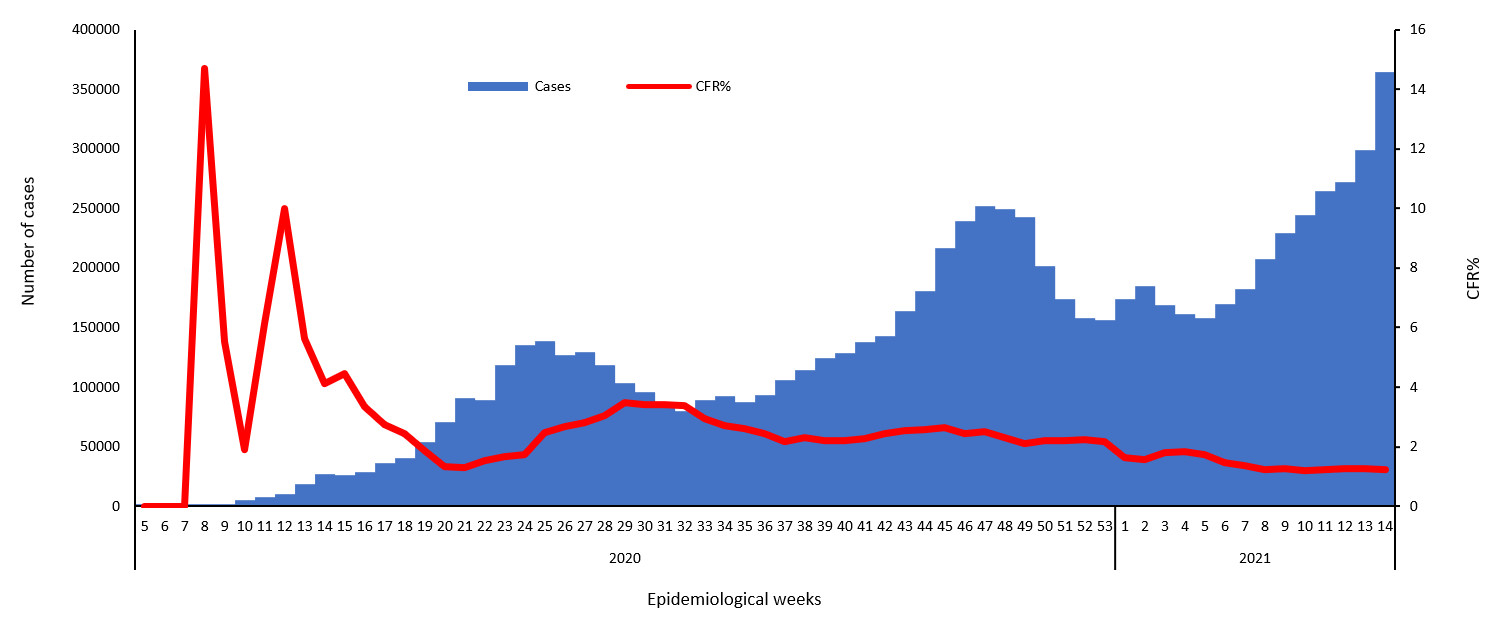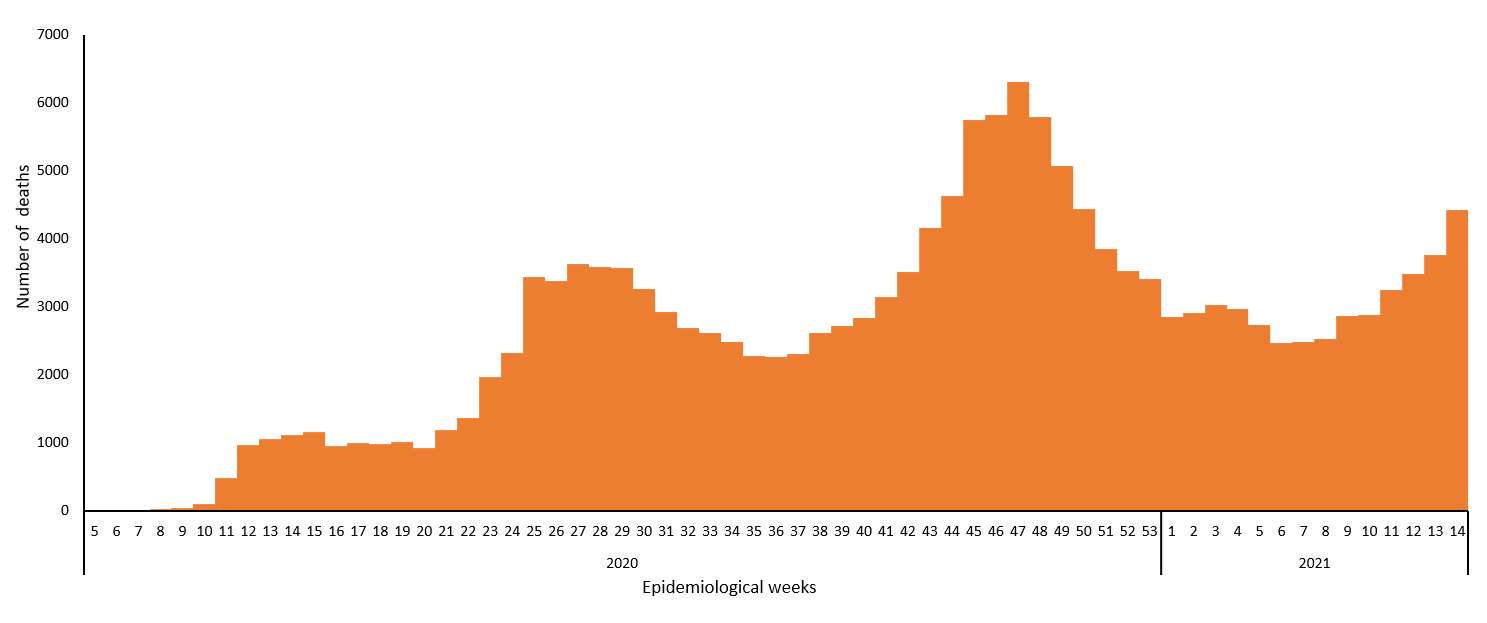The coronavirus disease COVID-19 continues to spread at the regional and global levels. As of 10 April 2021, the global cumulative incidence reached 134 317 984 reported cases and 2 908 059 associated deaths with a case fatality ratio (CFR) of 2.2%. Meanwhile, the 22 countries of the Eastern Mediterranean Region (EMR) have reported a total of 8 065 183 cases, which represent about 6% of the global count, with 165 206 associated deaths (CFR 2%). Most countries in the Region are in the community transmission phase.
Since the beginning of the outbreak, the country that has reported the highest number of total cases in the Region is Islamic Republic of Iran (2 049 078 cases; 25.4% of the Region’s total), followed by Iraq (918 155; 11.4%) and Pakistan (721 018; 8.9%). Islamic Republic of Iran also reported the highest number of total associated deaths (64 232; CFR 3.1%) followed by Pakistan (15 443; CFR 2.1%) and Iraq (14 678; CFR 1.6%). The highest CFRs were reported by Yemen (19.5%) followed by Syrian Arab Republic (6.8%), while the lowest CFRs were reported by Qatar (0.2%) followed by United Arab Emirates (0.3%) and Bahrain (0.4%).
During epidemiological week 14, the Region reported an increase in cases of 22% when compared to the previous week (364 113 cases compared to 299 290 cases). Similarly, an increase of 17% was observed for associated deaths (4415 deaths compared to 3763 deaths).
Djibouti, Yemen and Islamic Republic of Iran reported a relative increase in COVID-19 activity in week 14. The cumulative number of cases increased from 8509 to 9722 in Djibouti (14.3% weekly increase), from 4701 to 5280 in Yemen (12.3% weekly increase) and from 1 920 394 to 2 049 078 in Islamic Republic of Iran (6.7% weekly increase). Djibouti, Yemen and Qatar had the largest relative increase in deaths.
In terms of testing, a total of 120 588 659 laboratory PCR tests were conducted since the start of the outbreak across the Region including 4 350 357 tests in week 14, which shows an 8% increase compared to the previous week when 4 023 802 tests were conducted. The highest number of PCR tests were reported from United Arab Emirates (40 million), followed by Saudi Arabia (15.7 million) and Islamic Republic of Iran (13.6 million). The United Arab Emirates and Bahrain are performing the highest rates of testing per capita (4047/1000 and 2211/1000, respectively). The average positivity rate for the Region is 6.7%. WHO recommends a positivity rate of around 3–12% as a general benchmark indicating adequate testing, which was achieved in most countries of the Region.
Meanwhile, COVID-19 vaccination continues across the Region. The total number of doses administered so far is 30 570 173 in 21 countries where United Arab Emirates has the highest number of administered doses at 9 156 728, followed by Morocco at 8 650 872 and Saudi Arabia at 6 470 714. On the other hand, the total number of administrated doses in Syria is 2500, in Djibouti is 9478, in Sudan is 49 932 and in Somalia is 110 941. Libya received COVID-19 vaccination through COVAX and started vaccination this week.
Supporting countries in the Region
The regional incident management support team continues to coordinate the response and provide technical support to countries and partners in the Region in the areas of coordination and partnership, surveillance, laboratory capacity, clinical management, infection prevention and control, risk communication and community engagement, points of entry according to the International Health Regulations (2005), research, health systems, and essential health services among others.


For more data from the Region, please visit the COVID-19 dashboard.
*The data on vaccination is obtained from a number of sources including media reports and country websites for ministries of health.
Subscribe to the monthly infectious hazard preparedness newsletter of WHO’s Health Emergencies Programme for latest data and analysis on epidemic- and pandemic-prone diseases, as well as news on outbreak preparedness and response within WHO’s Eastern Mediterranean Region.


